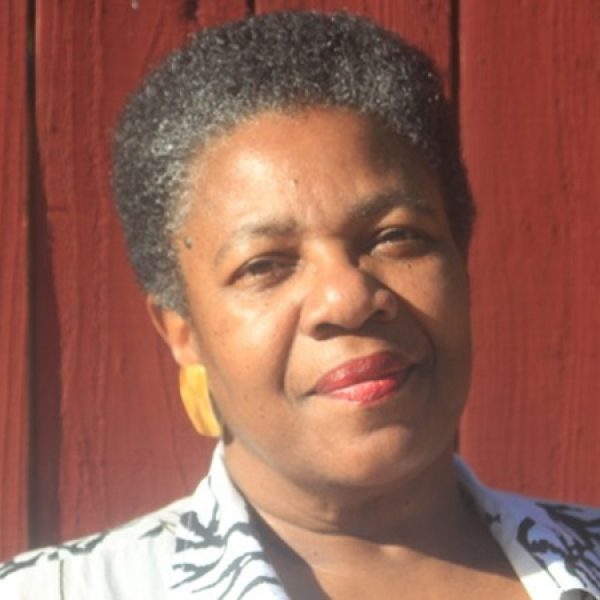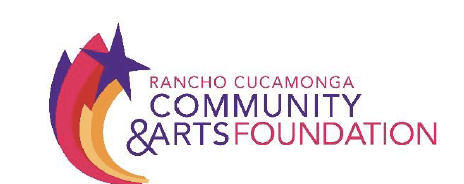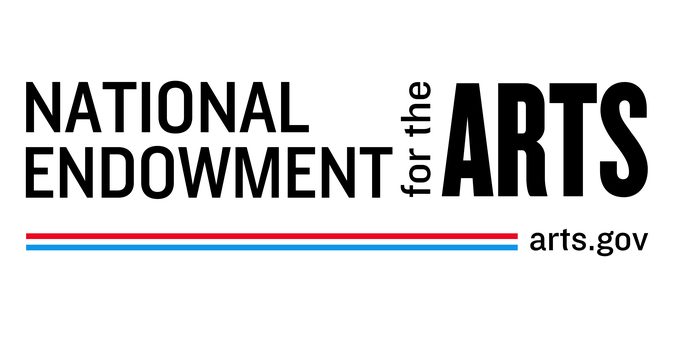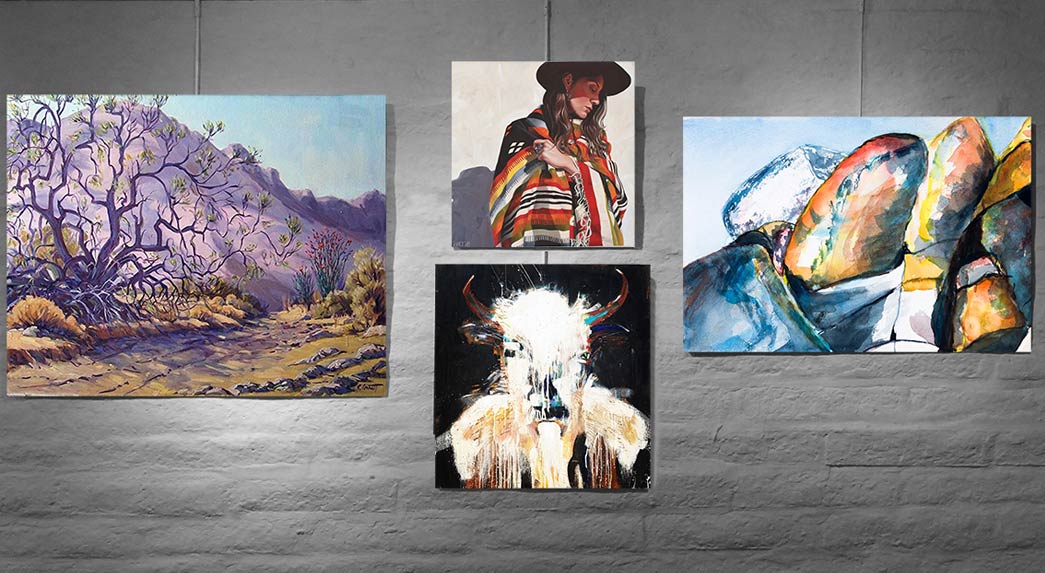Davida Siwisa James has a big vision– to change the cultural landscape of Victor Valley. The Executive Director of Victor Valley Arts and Education Center (VVAEC), she founded the arts nonprofit in 2013 in order to bring a new era of professional arts and culture to the area. When only a year old, the VVAEC received a grant of $10,000 from The Community Foundation of Riverside and San Bernardino Counties to implement a project that brought the arts to underserved populations – an impressive feat for a fledgling organization. In addition to such programs, Mrs. James’ biggest vision for Victor Valley is to build a state of the arts performing arts center.
Mrs. James grew up in NYC going to the Apollo Theater and Broadway shows as a child. She worked for 13 years as Assistant Director for UCLA Box Office and helped build the 1200 seat Reichhold Center for the Arts in St. Thomas, managing their programming and box office as well. It is without a doubt that her rich arts background and experience is an invaluable asset to the VVAEC and the High Desert community. I had the opportunity to speak with Mrs. James about her arts experience and vision for the organization.
Esther: You have lived in very culturally rich environments – such as NYC and LA, as well as in communities with art scarcity – like Harrisburg and the island of St. Thomas, how do you situate Victor Valley in this narrative?
Davida: Well in one way, we don’t have anything up here that would compare, which is part of the reason why I wanted to start the VVAEC. We have some small theatres and community theatre groups that are trying to do a good job to make sure there is some activity here, but I am hoping that after a lifetime in the arts, and twenty years experience working in arts management, that those experiences will help us move our nonprofit forward, in terms of galvanizing our community to see a more professional and advanced level of performing arts in the high desert.
Esther: When did you start VVAEC?
Davida: It’s been a little more than a year, in May we celebrated one year of being formally incorporated. I started it in February 2013, just getting the background information and everything I needed in terms of research of what was up here, and what to do to incorporate.
Esther: Was there a moment or predominant motivating factor that inspired you to start the VVAEC?
Davida: It was mostly realizing that anytime that I wanted to see a Broadway quality play or any major art that I would have to get on the freeway and go somewhere. Another incident that also inspired me was when I was interviewing a woman for the Daily Press up here, and she mentioned that her son went off to college and the first thing he did was go to museums and concerts because he didn’t have that here where he grew up. It was great that he was getting that exposure finally, but it occurred to me how sad it was that you have generations of people who are born and raised here who don’t understand what it is like to simply get in your car and drive down the street to a beautiful concert hall. It is sad that they always have to go somewhere outside of their own home, and having had that all my life – either Philadelphia, New York, or Los Angeles, I thought it was sad that the minute that he got there he wanted to immerse himself in culture because he never had that exposure in his own home. So it was knowing that I would always have to get on the freeway, knowing that if we could enrich the lives of young people here by being exposed to the arts at a young age, that it would change them forever, it would change the community forever.
Esther: Could you speak about any challenges that the VVAEC has? In the foreseeable future or right now?
Davida: We have had a little bit of press, a chance to speak a few different times, and I think that the two — I don’t want to name the number of challenges — one challenge for sure, a lot of people who have never had this, don’t know what they are missing. So it’s a question of how do we convince them how incredible it would be to have a performing arts center, having your children exposed to the arts. It’s like anywhere, if you haven’t had it, then you don’t know what you’re missing. While everyone I speak to is positive and excited about it, it’s such a big idea — it’s such a huge idea — that I think that beyond people saying ‘Wow that would be great, go do it,’ they’re having trouble wrapping their heads around the idea of this really happening. We haven’t gotten that forceful community support that says ‘I’m with you, I’m with you, I’m with you, let me write a check.’ The second challenge is for people who have moved here from other places. A lot of them recognize what a wonderful thing it would be to have a performing arts center up here, but they almost seem content to go to LA, Riverside, or San Bernardino, or wherever there is something, because it might be simpler to do that. So it’s definitely getting that support – this is important to the life of a community, this is important to the growth of a community.
Esther: So do you feel that Victor Valley has a geographical disadvantage because of the accessibility of arts in neighboring cities?
Davida: I think that should be an encouragement. We have more of a population, more of a landmass than some of our neighbors, and that should, if anything, illuminate for us the possibilities for Victor Valley. If a little town like Fontana can do this, then why not us?
Esther: Can you speak about the plays that you put on, that were possible through the grant that you received from The Community Foundation of Riverside and San Bernardino Counties? Was the project, in your eyes, successful?
Davida: The purpose of that grant was to bring arts to people and venues where they normally don’t get the arts, so even if we didn’t have huge audiences, I think that what the people received was significant. They were so receptive and excited about us doing this for them. We had one woman at the Adelanto Senior Center, she was about 85 or 90, and she had never seen a play in her life; it was very moving. We did some surveys and we found that in each one of the venues, while we had some people who had a moderate amount of exposure to arts, we had many who had never been to a play, never seen a play. It’s very powerful to know that you are bringing this to someone for the first time ever. It was very successful in that we totally satisfied the purpose of this grant. Plus we engaged the people at those places because we had two residents of the senior centers as the actors for the main characters. We also were the youngest, newest arts organization to receive the grant. I believe The Community Foundation told us that 30 arts organizations applied for the grants, of which 6 were awarded, and out of all of them, we were the newest. We were barely a year old but they seemed to like our project because we got funded, and that was very gratifying to have that support for our project.
Esther: Victor Valley is really fortunate to have someone of your passion and experience working hard to bring arts and culture to their community.
Davida: Well first of all, you’re only as strong as the people you have around you and behind you, but at the same time what I hope to do is establish this in a way where even if I wasn’t here, other people would embrace this idea and understand how critical it is to have this. It has to get started somewhere, we are beginning the dialogue that says ‘Let’s start working towards this.’ It is obviously not going to happen overnight but it can ONLY happen if we can get the community believing in this dream. It is a big idea, it is a big undertaking, but we can do this. And our community deserves this. It always starts with somebody, it could be the Lincoln Center, the Kennedy Performing Arts, the Dorothy Chandler pavilion, no matter where it is, somebody had to say ‘We should build something so we can bring in the arts.’
Esther: And it’s always harder starting from scratch.
Davida: It is, it really is. There are small towns throughout the country that have had a concert hall for a hundred years, but if you’re starting from a place that has never had much arts exposure, they have no idea how much it adds to the economy, the livability factor of a community. One of our earlier board members pointed out how this would change the economy, and I hadn’t considered that at all. The quality of life can be vastly improved with the arts- restaurants, hotels, businesses- everyone benefits. This is not to even mention the cultural aspect. I hope one day we will be having an interview where I will be saying ‘We are having our grand opening!’
If you would like to learn more about the Victor Valley Arts and Education Center and Davida S. James, please visit:
http://vicartsed.org/victor-valley-arts-and-education-center/
http://hdcfoundation.org/victor-valley-arts-and-education-center
“It’s been a very long time since I’ve been to a Broadway show the week it opened. But I have those memories that no one can take away. And in the end, our lives are enriched by those magical moments, those memories that make us smile.”
– From “The Arts in my Life” by Davida S. James





